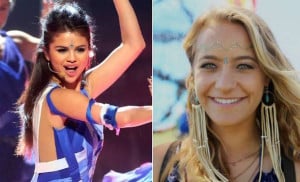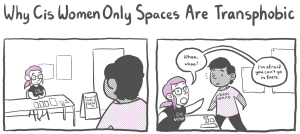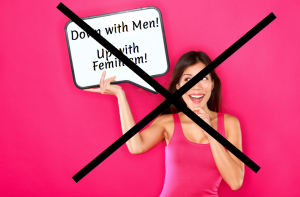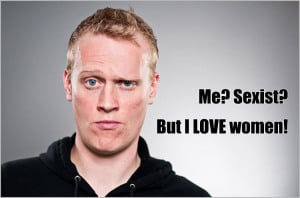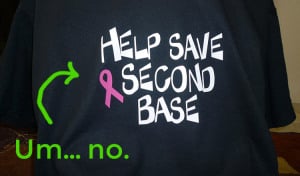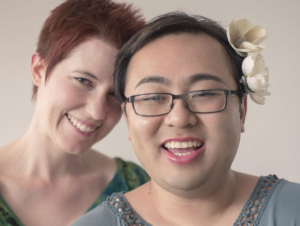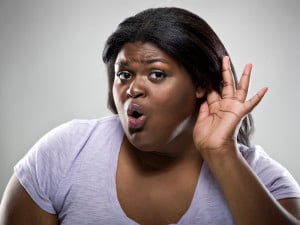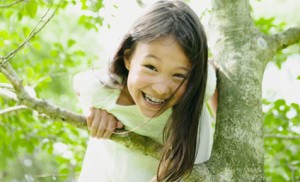
Source: Kidspot
When I was about five years old, I fell out of the mango tree in our neighbor’s yard.
It wasn’t a particularly horrible fall, but I skinned both of my knees to the point that some parts were paper white, and I bruised my shins for what seemed like the one-millionth time.
I went inside to show my grandma my fresh wounds, completely stoked about the opportunity to nurture new scars. For me, scars represented excitement and action, and they reminded me that I was spending time outside with my brother, my cousins, and our friends.
My grandma did not see it that way.
As she wiped my skinned knees and carefully tapped the wet cloth along my now purple shins, she spoke to me with deep concern.
“Keela, if you not careful, you going to blacken up your knees an’ spoil up you legs. You don’t want that, right?”
“I dunno, Grandma,” I replied honestly as she blew softly on the stinky iodine she had just applied to my “black and spoiled up” knees.
“What you mean you don’t know? You’re a little girl! Little girls must not have black knees! And you know that black knees not goin’ to look good in a pretty frock. Be a good girl and stop the hard rampin’ (playing), so you don’t spoil up youself, okay?”
I nodded in feigned agreement as she kissed my forehead and sent me back outside with unrealistic soft-play orders and big doses of Grandma Love.
I was incredibly confused.
To me, my grandma had strung together a series of things that were not connected, and all I heard was her telling me not to have fun.
Firstly, I couldn’t care less about the color of my knees or my legs. My legs were brown, and my knees were closer to black than brown, and neither of those colorings affected my ability to run. Running, at that age, was my biggest priority, as it was the ever-necessary element of a good time outside.
Secondly, even though I did adore some of the “pretty frocks” my mother sent for me from America, I wasn’t clear on how legs of any color could look bad in those dresses.
My legs naturally protruded from all my dresses, no matter the color of my legs (or the dresses). As long as I took my shower, put my baby powder on my neck, and smiled when old people called me “pretty darling,” then it had seemed to me that I was exhibiting the appropriate dress-wearing behavior.
As I got a little older (ages 6-9), I tried to be the “good girl” that Grandma said I should be.
I tried to avoid falling, sometimes hiding my bruises from her so as not to be labeled as bad (since I knew from paying attention in school that bad was the opposite of good). I also began to loathe “pretty frocks” of all kind as it became clear to me that I would have to choose being bad whenever one was on my body.
I still played hard and I still climbed mango trees, but in a dress, the consequence of a fall was magnified by the disapproving looks and words of the adults who apparently wondered why I wouldn’t choose protecting my pretty dress and potentially un-scathed legs over enjoying my childhood.
Today, I am a mother of two girls, and I have never called either one of them bad or good.
I am so keenly aware of the potential harm it can do to equate someone’s action, and their perception of that action, with who they actually are.
This issue is not unique to parenting, as our own childhood experiences are where we learn and conform to the constructions that either uplift or enslave us as adults.
I don’t ever remember my brother or male cousins being warned about blackened knees not looking good with their best shorts, and even today, I still recognize versions of that privilege of unrestricted play among my brother and male cousins.
It looks like a mother being frowned upon for breastfeeding her daughter in a public park while the guy on the jogging trail runs shirtless.
It looks like gray hair on an aging man being decidedly sexy, but gray hair on an aging women being in need of a fresh coloring.
It looks like a man “being a man” when he gains weight and loses hair, but a woman “letting herself go” if she follows the same path.
He is good, and she is bad. His actions are acceptable, hers are not. Black knees for her, and no relevance at all for him.
If you connect with the idea that labels such as “bad” or “good” are more about constructs and conveniences than nurturing and positive intention, consider this assertion of author and spiritual teacher Eckhart Tolle: We are not our thoughts or feelings, but the person observing those feelings and thoughts.
I am a being experiencing a feeling – a valid, powerful, and perhaps even necessary feeling – but a feeling nonetheless, not to be confused with who or what I inherently am.
I encourage you to consider that mindset as you experience the labeling, expectations, and general social constructions that come with being you.
Use this belief to manage your full spectrum of emotions, feel exactly however you need to feel in that moment, and then begin the process of acknowledging the separation of feeling/thought from self.
In doing so, you empower yourself to stop being hurt, and instead experience hurting.
If you are hurt, it is an intrinsic and possibly permanent feeling. If, however, you are experiencing hurt, you can find solace and even happiness in the knowing that experiences show up, but seldom do they remain permanent aspects of your life.
It is a very dangerous thing to define someone as good or bad, especially when that someone is young.
Behaviors, choices, and actions can be good or bad, helpful or hurtful, well-meaning or malicious. A person, on the other hand, is a shell. A shell with options to do and say things in according with, or in opposition to, the expectations of the people they are around.
You, yourself, are not bad or good. You are simply experiencing your life, making decisions, learning, and growing.
If you, like me, recognize the constructions and have had to pull yourself from outside their confines, remember this: You can always tap into the knowledge of thoughts as separate from self, and you can choose to play in your dress or your trousers, without giving a shit about their opinions of your worth, your value, your choices, or the fate of your black and spoiled up knees.
Want to discuss this further? Login to our online forum and start a post! If you’re not already registered as a forum user, please register first here.
Akilah S. Richards is a Contributing Writer for Everyday Feminism. She is a six-time author, digital content writer, and lifestyle coach who writes passionately about self-expression, womanhood, modern feminism, location independence and the unschooling lifestyle. Connect with Akilah on Instagram, Tumblr, or her #radicalselfie e-home, radicalselfie.com. Read her articles.
Search our 3000+ articles!
Read our articles about:
Our online racial justice training
Used by hundreds of universities, non-profits, and businesses.
Click to learn more
Most Read Articles
- « Previous
- 1
- …
- 30
- 31
- 32





